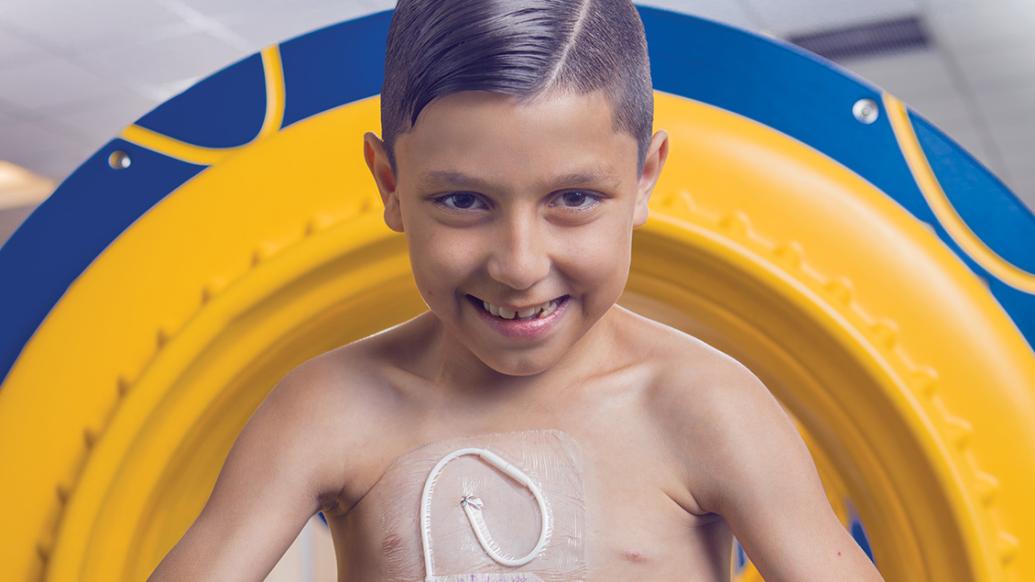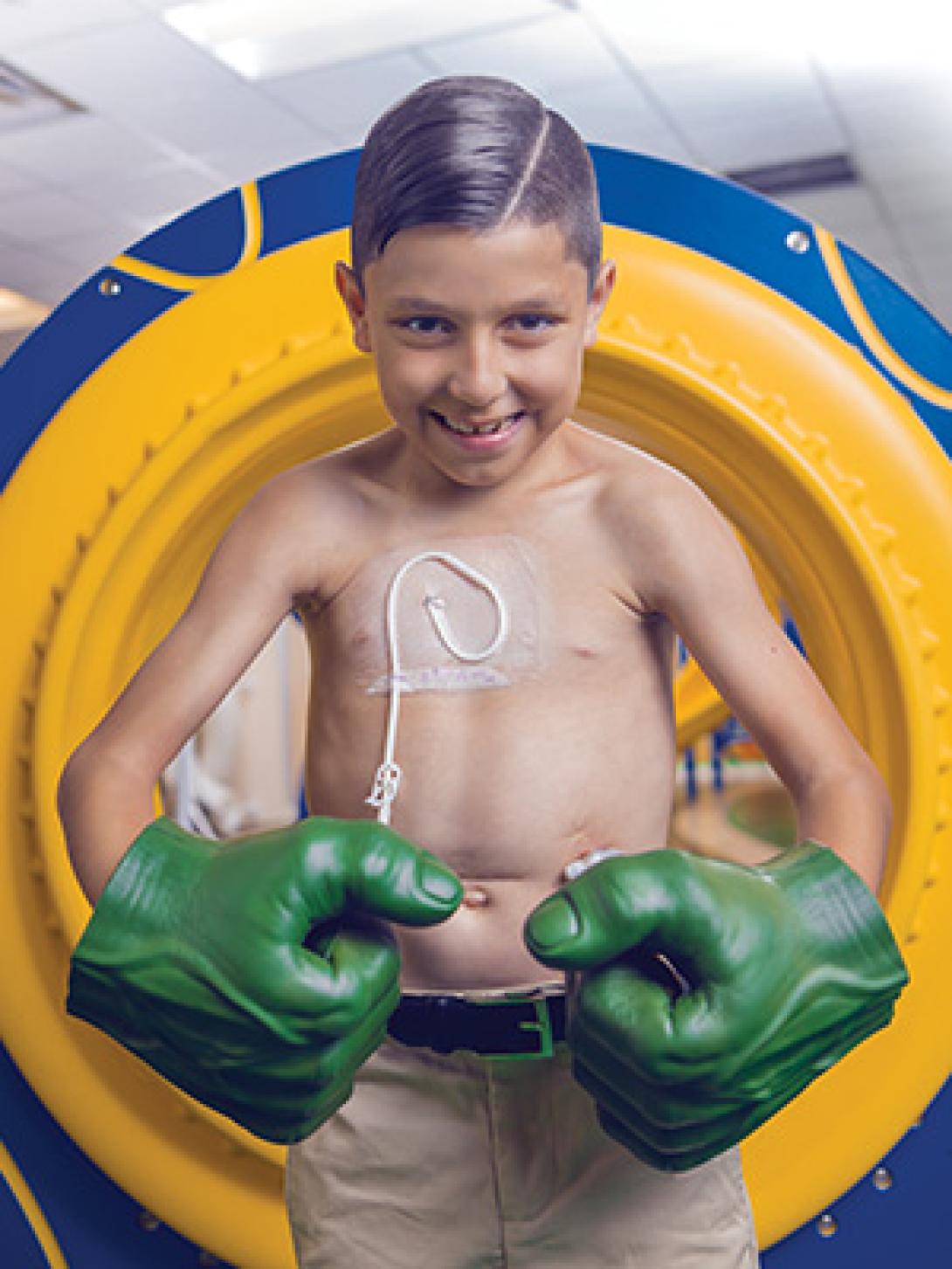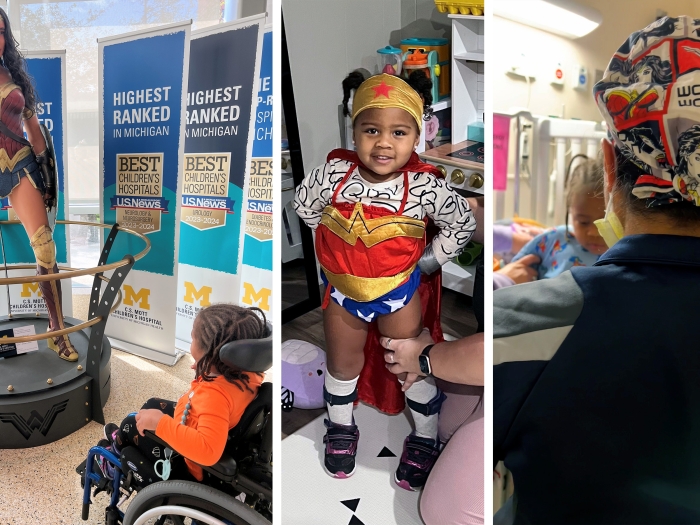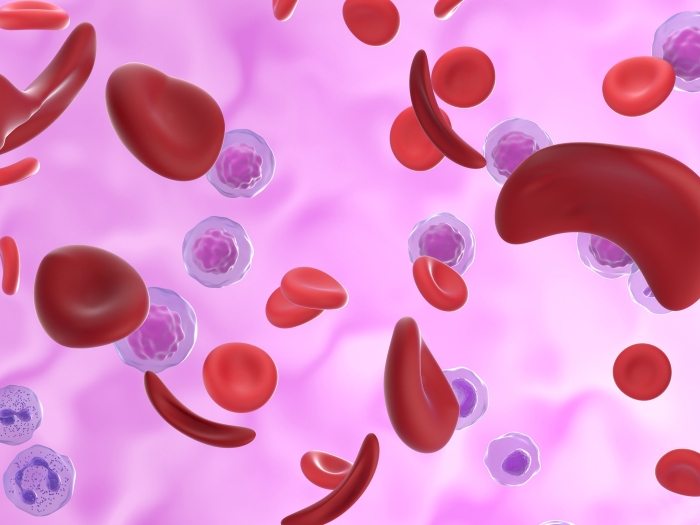
Marguerita Booth had never heard of a child being born with their organs on the outside of their body.
And yet as she laid in the darkened room of her first ultrasound of her first pregnancy, she was suddenly introduced to a condition that surprisingly affects 1 in every 3600 babies.
“When the doctor told me my son had gastroschisis, I was just so confused because I had never heard of such a thing,” remembers Marguerita. “But when they told me it was a condition where the intestines were on the outside of the baby’s stomach, I was shocked and terrified. I mean how could anyone survive that?”
Marguerita was right to be concerned for her baby. While most children with gastroschisis survive this disease, many have severe gastrointestinal issues that require multiple surgeries and life-long complications.
Desperate to find solutions, Marguerita and her husband Dustin were referred to Michigan Medicine. The hospital system had the comprehensive team in place to help Marguerita not only deliver the baby safely at Von Voigtlander Women’s Hospital but prepare her for the multi-faceted care the child would need at C.S. Mott Children’s Hospital – two hospitals conveniently located under one roof at University of Michigan Health.
The U-M Health Fetal Diagnostic and Treatment Center is the region’s leading center dedicated to the prenatal management of fetuses with a variety of congenital anomalies. Gastroschsis is diagnosed by prenatal ultrasound with the bowel is noted to be outside of the abdominal cavity. Repeat ultrasounds every few weeks is recommended to evaluate for changes in the bowel and to check the baby’s growth. The FDTC team, including experts in maternal fetal medicine, pediatric surgery, neonatology and other specialists as needed, work together to identify the best time for delivery.
As Marguerita and the delivery team prepared for the baby’s birth which came naturally at 33 weeks gestation, something seemingly miraculous happened. On the day of delivery, on January 30, 2011, the parents discovered that the intestines were not outside of the body as seen in the initial ultrasound. Rather, they were inside the abdomen where they needed to be – a condition called vanishing gastroschisis (when the bowel that had been outside is now gone).
“When we heard the intestines were in the right place, we were just so excited,” says Marguerita. “We really thought the worst was behind us.”
However, further challenges awaited for Marguerita and Dustin. Because of the vanishing gastroshisis, all of the bowel that had been outside of the abdomen had died, leaving Bentley with minimal intestinal length, a condition known as short bowel syndrome.
While a healthy infant should have a small intestine of at least 150 centimeters in length at birth, Bentley’s measured just 17 centimeters. This meant he would have major issues eating by mouth and absorbing nutrients.

“I remember the day Bentley was born and the discussions that I had with his parents about what all this would mean for him. He underwent a major operation the day after he was born and it was at that time we discovered he only had 17 cm of small intestine. This shortened intestinal length requires that children be fed in a different way. Bentley had a feeding tube placed into his stomach – this allows us to give small amounts of formula 24 hours a day. Because his shortened intestinal length limits how much formula he can tolerate, he needed to have a tunneled central venous catheter (Broviac) placed to allow him to be fed using total parenteral nutrition (TPN), an IV solution that contains sugar, fat, protein and micronutrients,” said Meghan Arnold, M.D., pediatric surgeon and the surgical director of the Children’s Intestinal Rehabilitation Program at Mott.
Two weeks after surgery, Bentley came home for the first time. And while Marguerita and Dustin were happy to have their newborn son with them, their journey of being first time parents looked very different than their friends’.
Marguerita remembers, “With all the feeding tubes and other tubes that Bentley was using to help him receive vitamins and medicine, there were constant messes like vomiting. We were always changing his clothes. The worst part was that he was always in and out of the hospital because of other things like infections. We knew our son needed much more help.”
Less than two years later, it was decided to do two surgeries to lengthen Bentley’s intestine. Combined, the surgeries increased his intestinal length from 17 to 39 centimeters. These procedures enabled him to tolerate more formula into his gut and decrease some of his need for TPN.
By the time he was five, Bentley was finally able to eat some by mouth. Prior to this, he was entirely tube-fed only formula. While Bentley had received both life-changing and life-saving care on multiple occasions from Michigan Medicine and was making progress, Marguerita and Dustin wondered if there was another hospital that could deliver even greater outcomes for their son. So they chose to have a second opinion at a nationally renowned children’s hospital in Ohio.
“We loved our Michigan Medicine team, but just wanted to know we had exhausted all possibilities,” says Marguerita. “Suffice to say, we felt relieved when we discovered that the other best hospital told us we were in good hands and that Michigan Medicine was doing everything that they would do.”
Now eleven years old, Bentley is doing well and continues to make progress. Though he has undergone 21 surgeries for things like intestinal repair and placing new feeding tubes and central lines, he is healthy and active like any other child. While he wears a backpack with a feeding tube that continuously flows nutrition into his body, he can enjoy eating his favorite foods like spaghetti.
“We’re so happy with the progress he’s made over the years beyond eating and all the GI needs,” says Marguerita. “Bentley loves playing basketball, video games, riding his bike, and playing with toy cars and semis. He wants to be a truck driver like his dad when he grows up. We’re just really grateful to Michigan Medicine for helping him all these years.”
“Bentley is an example of what can be achieved through the multidisciplinary care available at the Children’s Intestinal Rehabilitation Program at Mott. The primary goal of our program is for children to live with as few limitations as possible. We treat each child and their family as individuals with unique needs but with the potential to live as “normal” a life as possible.”

Discover the power of a Michigan Answer through inspiring stories. Find hope and inspiration for your own journey by reading more.





